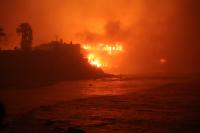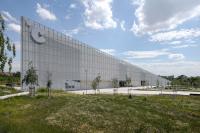MÓKEMBÉ - CEMETARY
Budapest, Hungary
Necropolis Embedded in the City
The project revisits the archetype of the Necropolis, where the conventional - and somewhat commodified - rituals of death can happen in close proximity to the dynamism of profane urban life once again. Its a multifaith architectural device for new forms of interaction between living and dead, between profane and sacred, between everyday and ritual.
Death is an integral part of our everyday life, in a way more ubiquitous – as unavoidable - than the beginning of the story, birth. Still, from the 18th century death as fact and collective ritual has been pushed out from the space of the metropolis. The logic of capitalist modernity transformed death into a hygienic and biopolitical problem, rendering it a cultural taboo and personalised trauma Modern architecture became one with infrastructure, the infinite and atemporal system that took over life and ensured that it would be one of constant production, re-production and consumption. Death as fundamentally improductive and finite has simply no place in that system.
To counter this, I propose a re-interpretation for the archetype of the Necropolis. The project is located in central Budapest, reusing the abandoned premises of the historical Kilián Barracks straddling a busy intersection on the Grand Boulevard. Once an infamous device and symbol of military power in the city, its myth evolved by playing an important role in the 1956 revolution. Today its a quasi-ruin, offering itslef as an indifferent receptacle for any functions. It has a strong yet simple structure defining three courtyards and a continous, block lentgh facade towards the city. I use it as a skeletal framework for the necropolis, keeping only the load-bearing walls intact by vertically reenforcing them, getting rid of the roof and all the fenestration. Thus they turn into actual ruins, into porous tresholds between polis and necropolis. The complex is a composition of three parts; two new structures, occupying the smaller courtyards, and a cemetery in the form of a three story high inhabitable wall for urns. The wall encloses a large, and empty public square. One of the new buildings is a multifaith space for funerary ceremonies and a crematorium underneath. The sequence of spaces makes it possible for the mourning parties to be present at every important stages of the funeral process. It has a strong form – percievable only from inside - without using any concrete cultural iconography or obvious references. The second is a center for mourning and memory, with private rooms for contemplation. Its main feaure is a data-library which stores and handles a vast collection of audiovisual materials from the lives of the deceased. The data is accesible by individuals or groups, offering an architecturally defined, common space and figure for commemoration in the center of the city. The three elements are bound together by a newly planted grove covering the field between the artefacts. Both the garden and the central public square is open and can be penetrated by multiple activites of urban life. Service and logistic functions are placed along the party wall separating the grounds from the other half of the block.











